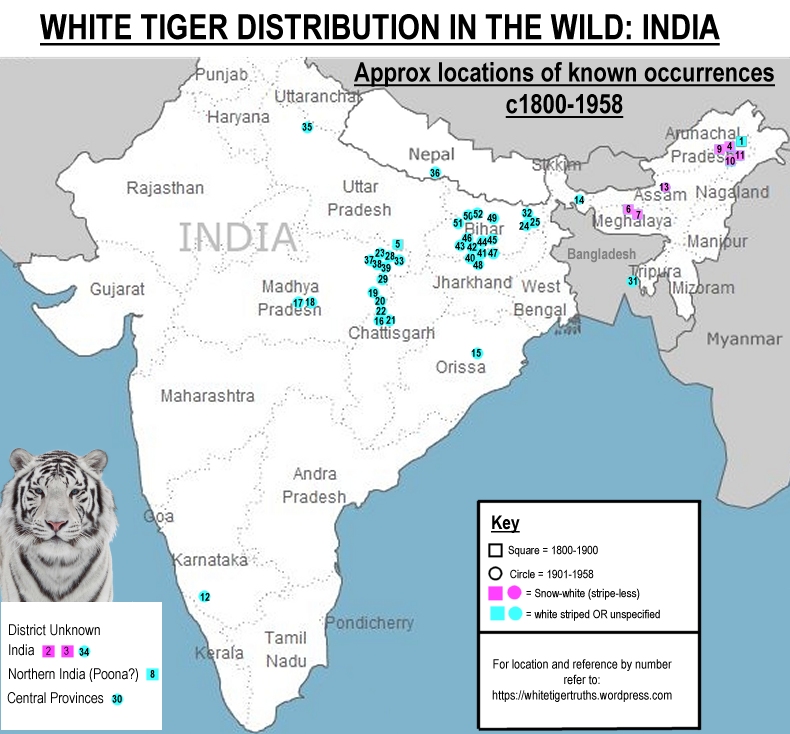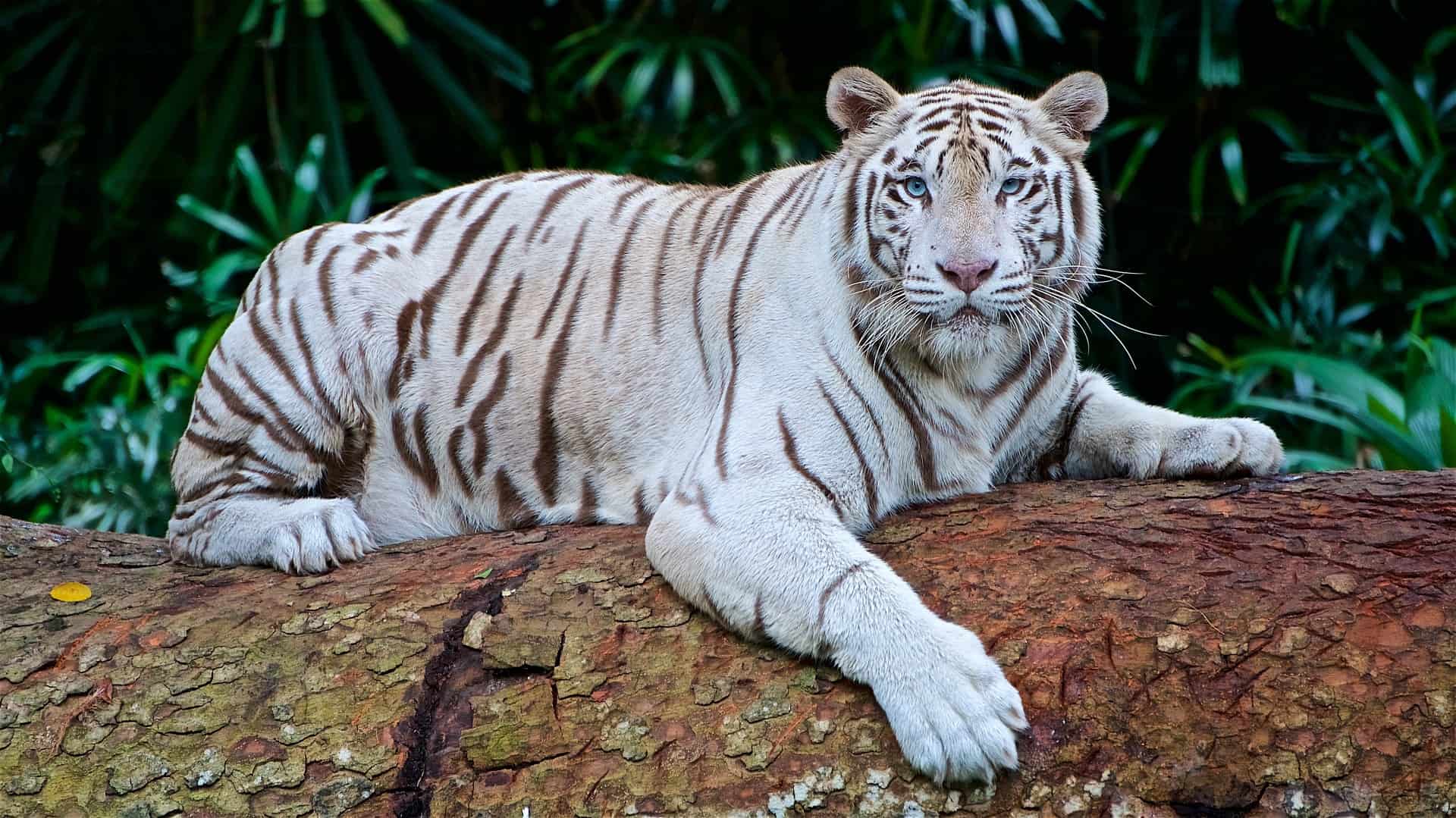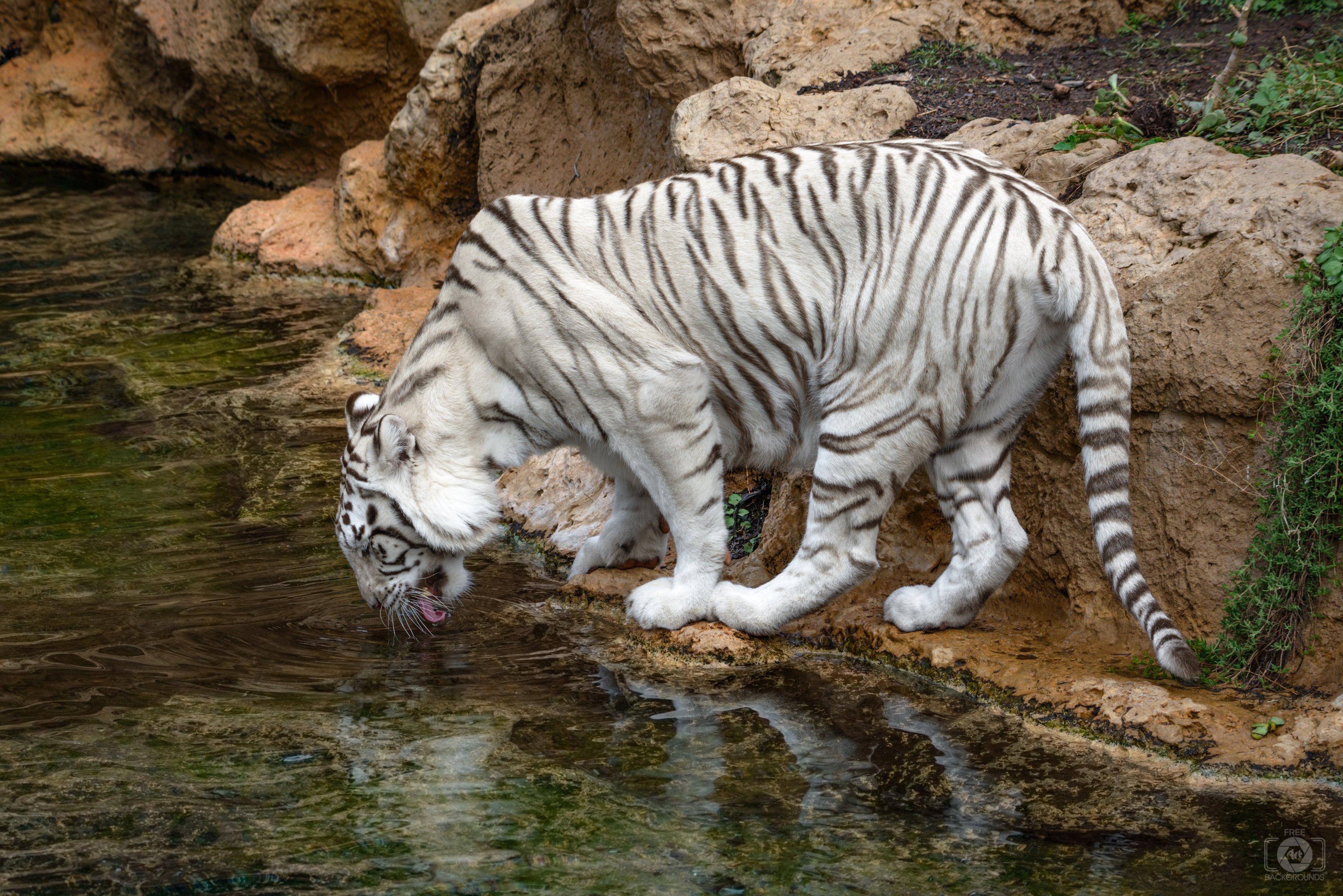STATUS
Critically endangered


The white tiger or bleached tiger is a leucistic pigmentation variant of the Bengal tiger, Siberian tiger and hybrids between the two. It is reported in the wild from time to time in the Indian states of Madhya Pradesh, Assam, West Bengal, Bihar, Odisha, in the Sunderbans region and especially in the former State of Rewa. It has the typical black stripes of a tiger, but carries a white or near-white coat.
The white Bengal tigers are distinctive due to the color of their fur. The white fur caused by a lack of the pigment pheomelanin, which is found in Bengal tigers with orange color fur. When compared to Bengal tigers, the white Bengal tigers tend to grow faster and heavier than the orange Bengal tiger. They also tend to be somewhat bigger at birth, and as fully grown adults. White Bengal tigers are fully grown when they are 2-3 years of age. White male tigers reach weights of 200 to 230 kilograms (440 to 510 lb) and can grow up to 3 meters (9.8 ft) in length. As with all tigers, the white Bengal tiger's stripes are like fingerprints, with no two tigers having the same pattern. The stripes of the tiger are a pigmentation of the skin; if an individual were to be shaved, its distinctive coat pattern would still be visible.
For a white Bengal tiger to be born, both parents must carry the unusual gene for white colouring, which only happens naturally about once in 10,000 births. Dark-striped white individuals are well-documented in the Bengal tiger subspecies (Panthera tigris) as well as having been reported historically in several other subspecies. Currently, several hundred white tigers are in captivity worldwide, with about one hundred being found in India. Their unique white color fur has made them popular in entertainment showcasing exotic animals, and at zoos.

STATUS
Critically endangered

SCIENTIFIC NAME
Panthera tigris tigris

POPULATION
Only 200 left

LENGTH
2.7 to 3.1 meters

WEIGHT
200 to 250 kg

HABITAT
RAINFORESTS

Protecting forest landscapes for tigers will help save the last remaining forests critical for the survival of wildlife and people, and regulating global climate. Hundreds of millions of people depend on water from places where tigers roam. ... Protecting tigers means protecting vital fresh water sources and functions.
The white Bengal tigers are distinctive due to the color of their fur.
The white fur caused by a lack of the pigment pheomelanin, which is found in Bengal tigers with orange color fur.
When compared to Bengal tigers, the white Bengal tigers tend to grow faster and heavier than the orange Bengal tiger.
The White Tiger has a number of adaptations to help it to both catch and kill its prey, including being strong and powerful, incredibly fast, and having long and sharp claws and teeth.




